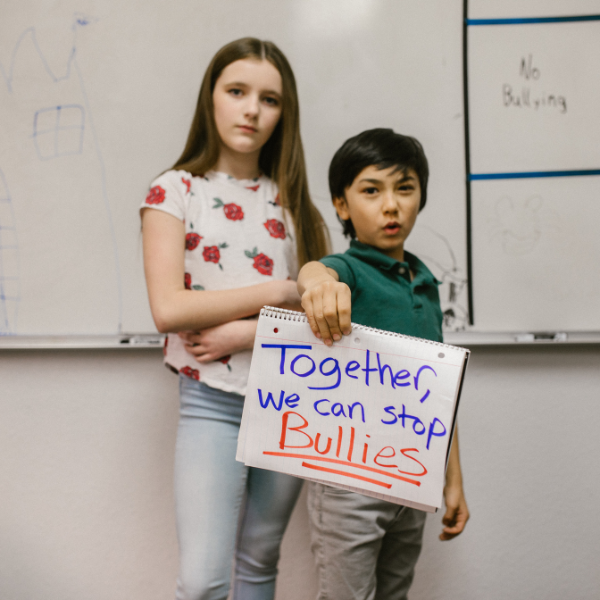
Celebrating Pride Month With Your Kids: A Parent's Guide to Support, Understanding, and Resources
As June rolls around, you might be noticing parades, special events, rainbow flags, and lots of excitement about Pride Month. If you’re wondering how to introduce this vibrant celebration to your kids and support them in understanding and embracing diversity, you’ve come to the right place. Let’s dive into what Pride Month is all about and how you can make it a meaningful experience for your family.
What Is Pride Month and Why Is It Important?
Pride Month is celebrated every June to honor the LGBTQ+ community. It commemorates the Stonewall Riots of 1969, a pivotal event in the fight for LGBTQ+ rights. But beyond history, it’s a time to celebrate love, acceptance, and the freedom to be yourself. Teaching your kids about Pride Month helps them understand the importance of diversity, differences, and respect for all people, regardless of who they love or how they identify.
How to Explain Pride Month to Young Children: Elementary Schoolers
For our littlest ones, simplicity is key. You might say something like, “Pride Month is when we celebrate love and being kind to everyone, no matter who they are and who they love.” Picture books are a great way to illustrate this message. Titles like Heather Has Two Mommies (affiliate link) by Lesléa Newman, And Tango Makes Three (affiliate link) by Justin Richardson, I Am Jazz (affiliate link) by Jessica Herthel and Jazz Jennings, and Julian Is a Mermaid (affiliate link) by Jessica Love are great for this age group. Check out this list for more book recommendations.
For older elementary school kids, they might be curious and ready to learn more. Look for age-appropriate content on YouTube channels like Queer Kid Stuff that explains LGBTQ+ topics in a friendly and accessible way. Attend a family-friendly Pride event in your community. Public libraries often host Pride themed read alouds featuring special guests.
Discussing LGBTQ+ Issues With Middle Schoolers and High Schoolers: Ages 12-18
Middle schoolers can handle more complex discussions. Start by talking about the history of Pride Month and why it’s celebrated. Ask open-ended questions like, “What do you think about celebrating diversity?” Encourage them to read books like George (affiliate link) by Alex Gino or Better Nate Than Ever (affiliate link) by Tim Federle, which can spark meaningful conversations.
Teens are likely to have more specific questions about identity, rights, and the LGBTQ+ movement. Be open and honest in your responses. Here are a few common questions and how to approach them:

- “Why is Pride Month important?” Explain the historical context and ongoing struggles for LGBTQ+ rights.
- “How can I support my LGBTQ+ friends?” Encourage them to be an ally by listening, showing respect, and standing up against bullying or discrimination.
- “What if I’m questioning my own identity?” Assure them it’s okay to explore their feelings and provide resources like The Trevor Project or local LGBTQ+ youth groups. Check out this map to find national programs and facilities that support LGBTQ youth and families near you.
Creating a Supportive and Inclusive Environment at Home
Parents and caregivers want their home to be a safe haven for their kids. Research from the Family Acceptance Project found that LGBTQ+ youth and young adults who report high levels of family acceptance of their LGBTQ+ identity report higher levels of self-esteem, social support, and general health compared to peers who report low levels of family acceptance. Here are some tips to foster inclusivity in your home:
- Respect Pronouns: Always use the pronouns that your child or their friends prefer.
- Celebrate Diversity: Display rainbow flags, read diverse books, and discuss the importance of acceptance.
- Model Acceptance: Show through your actions and words that everyone deserves love and respect.
- Welcome Your Child’s Friends and Partners: By welcoming important people in your child’s life into your home, you communicate that you value your child’s relationships and create a safe space for them to be themselves.
If your child comes out to you, your response is crucial and can have a lasting impact on their mental and physical well-being. Express your love and support unequivocally. Say something like, “I love you for who you are, and I’m here for you no matter what.” Seek out support groups for both you and your child, such as PFLAG, and educate yourself on LGBTQ+ issues to better understand and support them.
Addressing Bullying or Discrimination
Sadly, bullying and discrimination are still realities for many LGBTQ+ kids. If your child or their friends face such issues, take them seriously. Communicate with school officials to ensure a safe environment, and provide emotional support. Encourage children to express their feelings and consider professional counseling if needed. In recent years, app developers have worked to create tools that reduce cyberbullying.

- ReThink was created by 17-year-old Trisha Prabhu to stop cyberbullying before it starts, using behavioral science-based “nudges” to give kids an opportunity to pause, review, and rethink their messages before hitting send. ReThink detects offensive and hurtful content in real time before it is posted, and the app creator says that with these gentle nudges, adolescents change their minds over 90% of the time, opting to not send harmful messages. Watch Trisha’s TedTalk to hear the story behind the app.
- Speak UP and Safe2SpeakUp are both tools that parents and caregivers can encourage schools to adopt to put a stop to bullying, both online and in real life. Students use the app to anonymously report bullying, harassment, and safety issues when they don’t want to or don’t feel safe speaking with an adult.
Reliable Resources and Organizations
There are many excellent resources available to support you and your family. By simply striving to educate yourself, you are taking a step in communicating your support for LGBTQ+ people. Some favorites are:
- PFLAG: Offers support for LGBTQ+ individuals and their families.
- The Trevor Project: Provides crisis intervention and suicide prevention for LGBTQ+ youth.
- GLSEN: Focuses on making schools safe and inclusive for all students.
- GLAAD: Works to promote LGBTQ+ acceptance in media and beyond.
Happy Pride!
Pride Month is a wonderful opportunity to teach your children about love, acceptance, and the beauty of diversity. By using age-appropriate language, engaging with inclusive resources, and fostering an open and supportive environment at home, you can help your kids understand and celebrate this important time of year. Remember, the goal is to create a world where everyone can be proud of who they are.
Happy Pride, everyone! 🌈
Stay connected with Ed2Grow for more valuable insights and resources to help you navigate the joys and challenges of working with kids. Your journey matters, and we’re here to support you.
This blog post may include paid ads and as an Amazon Affiliate, Ed2Grow earns money from qualifying purchases.
